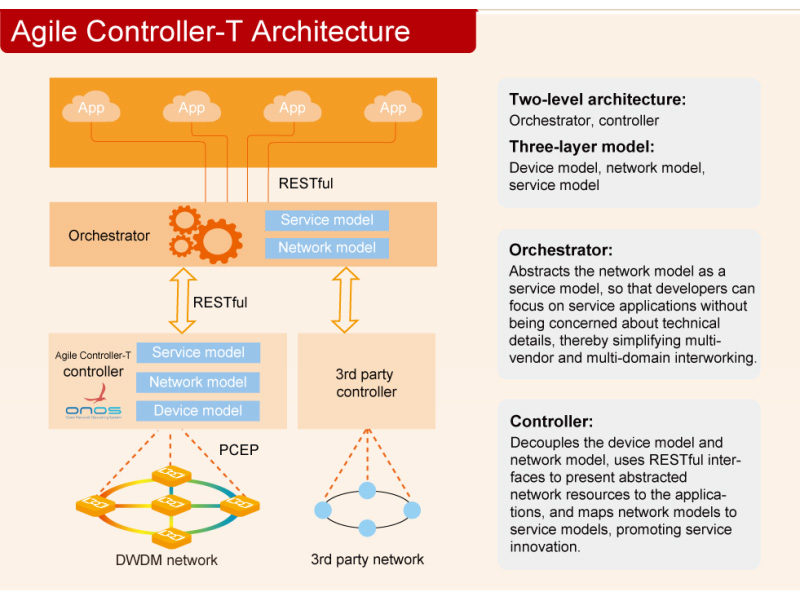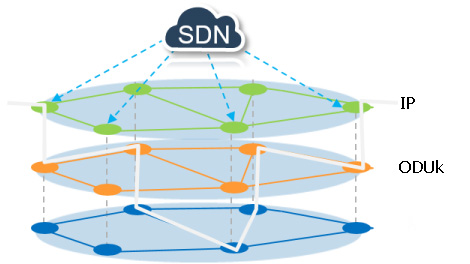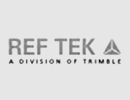Agile Controller-T
Transport-Software-Defined Networking (T-SDN) is the key driver for evolution and innovation of next generation transport networks. T-SDN technology breaks through the traditional, closed architecture, and enables construction of a transport network that is more open, synergetic, and automatic. T-SDN is one of the most important features of the next-generation transport network.
The Agile Controller-T virtualizes physical devices, collects network information from NEs in real time, and uniformly controls network resources to achieve optimal network resource utilization, significantly reducing network O&M costs and facilitating development of an open ecosystem.

Key Features
- On Demand: The bandwidth on Demand (BoD) feature helps VIP customers provision services within minutes, significantly shortening the Time-To-Market (TTM). With this feature, transport bandwidth can be adjusted in real time, preventing congestion in case of burst traffic
- High Efficiency: Featuring a centralized and advanced algorithm, the Agile Controller-T implements centralized network management, ASON + T-SDN dual protection (increasing the rerouting success rate by 10%). IP + optical multi-layer and multi-domain centralized management enables cross-layer automatic service provisioning and service protection synergy on the IP + optical network, improving network efficiency by 40% and provisioning services in minutes
- Open Platform: The three-layer model (device/network/service) and standard Northbound Interfaces (NBIs) are based on the YANG model, facilitating development of an open application platform and enabling users to focus on services.
- High Availability: The Agile Controller-T has achieved carrier-class reliability (99.9999%) using local clusters, dual servers in the same city, and geographic disaster recovery. In addition, it features an in-depth security defense system with multi-layer security mechanisms.

| BoD | The Agile Controller-T supports BoD, which is mainly applied to private line carrier and DCI scenarios. The Agile Controller-T also supports functions such as one-click fast service provisioning, on-demand bandwidth adjustment, and reserved service provisioning.
|
| Automatic O&M | The Agile Controller-T can obtain network-wide resource information and therefore can use advanced algorithms to schedule and optimize network-wide resources, greatly simplifying O&M.
|
| Resource Visualization | The Agile Controller-T supports layered visualization of network-wide resources and comprehensively monitors network performance using the network-wide resource view.
|




